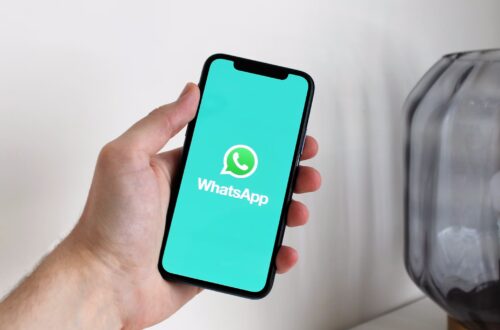When people think of WhatsApp automation, they often imagine simple broadcast messages or basic FAQ bots. That’s only scratching the surface.
The reality? WhatsApp has quietly evolved into one of the most powerful automation ecosystems available to businesses — particularly when powered by AI and the WhatsApp Business API.
In 2025, enterprises aren’t just using WhatsApp for messaging; they’re using it as a core workflow layer for marketing, operations, and customer support.
And the results are measurable — higher conversion rates, reduced support costs, and streamlined backend processes.
Let’s break down 25 practical, ROI-driving WhatsApp automation use cases that show both technical depth and business payoff.
1. Lead Qualification and Instant Response
When a customer inquires through an ad or website, WhatsApp instantly qualifies the lead — collecting name, intent, and budget.
Technically, this runs via a webhook trigger that routes incoming messages to your CRM through the Business API.
Why it matters: Faster first response = 3x higher conversion likelihood.
ROI Impact: 60% drop in lead leakage.
2. Abandoned Cart Recovery
In e-commerce setups, WhatsApp automations identify users who abandoned carts and send contextual nudges — sometimes with voice messages or images.
Integrating with Shopify or WooCommerce plugins, these workflows can recover up to 30% of lost carts.
3. Appointment Booking
Customers can check availability, schedule, and reschedule appointments — all through WhatsApp.
Under the hood, this connects the WhatsApp bot to a scheduling API or Google Calendar endpoint.
Example: Healthcare clinics use it to confirm slots without agent intervention.
4. Document Collection
In BFSI and lending, WhatsApp can collect KYC documents securely via encrypted uploads.
AI-powered checks validate file type and completeness automatically.
ROI: Reduces turnaround from 3 days to 3 hours.
5. Payment Reminders and Confirmations
Integration with Razorpay or Stripe APIs enables automatic reminders and payment confirmations.
The system matches invoice IDs with payment receipts and sends real-time updates.
Why it matters: 25% fewer defaults and improved cash flow predictability.
6. Referral Campaigns
AI workflows identify satisfied customers and trigger referral prompts post-service.
Custom referral codes are generated dynamically through the CRM.
Strategic angle: Turning happy users into acquisition engines.
7. Delivery and Order Tracking
Logistics automations push real-time shipment updates.
Through webhook integration with order management systems, WhatsApp notifies customers at every milestone — “Out for delivery”, “Delivered”, etc.
ROI: 40% drop in “Where’s my order?” queries.
8. Feedback Collection and NPS
Bots trigger surveys after service completion.
Response parsing via NLP extracts sentiment (“good”, “bad”, “average”) and routes negatives for escalation.
Insight: 70% survey completion rates vs 20% for email.
9. Dynamic FAQs and Self-Service
Instead of pre-coded menus, AI-based knowledge bases power dynamic FAQ resolution.
When users type questions, NLP models retrieve real answers from the company database.
Outcome: 50–60% ticket deflection.
10. Loyalty Program Management
WhatsApp bots update customers on points, rewards, and redemption options.
Tied to CRM, it offers real-time balance lookup or expiry notifications.
11. Recruitment and Candidate Screening
HR teams automate the first layer of screening — collecting resumes, verifying role fit, and scheduling interviews.
Integrates seamlessly with ATS tools like Greenhouse or Zoho Recruit.
Benefit: Cuts recruiter workload by 40%.
12. After-Sales Support
In industries like electronics or consumer goods, WhatsApp automates troubleshooting via diagnostic trees or AI repair assistants.
If unresolved, the case escalates to a live agent.
Impact: Customer satisfaction scores up 25%.
13. Internal Alerts and Escalations
Automation isn’t only for customers.
When a critical support case opens or SLA breach nears, WhatsApp notifies internal stakeholders instantly via webhook push.
14. Inventory Updates and Supplier Coordination
Manufacturers use WhatsApp to auto-update distributors about stock availability and shipments.
It plugs into ERP or inventory APIs like SAP or Odoo.
ROI: Eliminates 100+ manual calls daily.
15. Real Estate Lead Nurturing
In property sales, bots qualify interest, share brochures, and schedule site visits automatically.
Smart workflows prioritize leads based on engagement level.
Outcome: 2.5x faster conversion cycle.
16. Utility and Subscription Renewals
Energy, telecom, and insurance providers use WhatsApp to remind customers of due renewals — and allow one-tap payments.
Technical flow: WhatsApp → Payment API → CRM update.
17. Multilingual Support
AI-powered language models allow dynamic translation of customer messages.
No need for separate regional agents — one bot handles all.
Why it matters: Expands reach in non-English markets.
18. Onboarding and Training
For new users or employees, WhatsApp sequences share tutorials and videos automatically.
This turns WhatsApp into a “micro-learning” platform.
19. Voice Bot Integration
Layering voice agents within WhatsApp allows customers to speak instead of type.
Speech-to-text converts messages in real time; text-to-speech replies complete the loop.
ROI: 30% faster resolution times.
20. Broadcast Announcements with Smart Segmentation
Rather than bulk-blasting everyone, AI-driven segmentation ensures only relevant updates reach customers — based on behavior and tags.
Outcome: 2x higher engagement vs generic broadcasts.
21. Cross-Sell and Upsell Automation
WhatsApp identifies purchase history from CRM data and triggers timely offers.
E.g., “You bought X last month — want to try Y?”
Business impact: +18% average order value.
22. Feedback-Based Escalation Loops
Bots analyze negative sentiment in responses and auto-escalate to supervisors.
This uses sentiment classification models and SLA timers for human intervention.
23. Event and Webinar Reminders
Marketers automate event registrations, confirmations, and follow-ups.
Integration with calendar APIs ensures personalized reminders.
Result: 3x higher show-up rates.
24. Compliance Notifications
Financial or healthcare firms automate compliance alerts (“KYC expiry”, “policy update”) to stay within regulatory timelines.
Each message is logged for audit — essential for ISO and SOC compliance.
25. AI-Powered Agent Assist
In hybrid setups, live agents get AI whisper suggestions within their CRM during WhatsApp chats.
The system fetches next-best actions or reply templates.
Technical gain: Reduces AHT (Average Handling Time) by 35%.
The Technical Framework Behind It
All these use cases share one architecture pattern:
Webhook → API Layer → NLP or AI Engine → CRM → Response Delivery.
Here’s what that means in practice:
- WhatsApp Business API acts as the gateway.
- Automation logic (in Node.js, Python, or through low-code tools like n8n or Make) manages message flow.
- AI models power personalization, language detection, and sentiment.
- The CRM and analytics layer measure ROI, response rates, and resolution speed.
This modular setup allows incremental scaling — add use cases without rewriting infrastructure.
“Our architecture allows us to add a new WhatsApp workflow in under 3 hours. The challenge isn’t coding; it’s defining ROI clearly before automation.”
— Arjun Deshmukh, Head of Automation, TechFin Systems
The ROI Story
Every automation discussed here ties back to measurable outcomes:
| Category | Use Cases | ROI Lever | Measured Impact |
|---|---|---|---|
| Sales | Lead capture, abandoned cart, cross-sell | Faster response, targeted follow-ups | 3–5x ROI in 90 days |
| Support | FAQ bots, complaint handling, escalation | Agent cost reduction | 40–60% cost savings |
| Operations | Inventory alerts, logistics, renewals | Reduced manual workload | 35% efficiency gain |
| Marketing | Segmented campaigns, feedback loops | Improved engagement | 2x conversion uplift |
| Compliance | Notifications, documentation | Risk mitigation | 100% audit visibility |
The takeaway: WhatsApp automation delivers dual value — operational efficiency and improved CX — when tied to the right business KPIs.
Technical Requirements Checklist
For teams planning to scale WhatsApp automation, the foundational stack should include:
- Verified WhatsApp Business API account (via Meta-approved BSP).
- Webhook endpoint hosted securely (HTTPS + JWT token).
- CRM / backend integration for personalized replies.
- Language models or AI layer for context understanding.
- Monitoring and analytics dashboards for performance tracking.
Strategic Implication
WhatsApp automation is no longer an edge experiment — it’s a mainstream productivity engine.
Enterprises leveraging 10–15 of these 25 workflows typically see ROI within the first quarter, especially when combining automation with AI-based personalization.
The challenge isn’t whether automation works.
It’s choosing which workflows drive the highest measurable impact — and executing them with precision.






